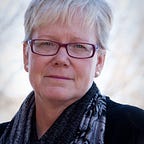Guatemalan Forensic Team Have a Conflict of Interest and Must Not Work On Canadian Soil
By Michelle Stirling ©2023
It’s hard to believe that a conflict of interest exists between Canada and an organization tasked with forensic removal and identification of Guatemalans who were ‘disappeared,’ tortured, and murdered during the civil war in Guatemala which raged between 1960 and 1996. But there is one, in my opinion. And that is why, despite the offer by the Forensic Anthropology Foundation of Guatemala (FAFG) to help with the identification of alleged Indigenous bodies in unmarked graves across Canada, claimed to be evidence of genocide, the Guatemalan’s offer to help should be declined.
The Guatemalan group’s name appears in documentation which Kimberly Murray, Special Interlocutor on Missing Children and Unmarked Graves and Burial Sites associated with Indian Residential Schools, sent to Jose Francisco Cali-Tzay, the UN Special Rapporteur on Indigenous Human Rights, himself a Guatemalan, and in her interim report to the federal government. Murray was supposed to have been appointed to be objective and impartial in her position, but she states clearly in her report that she does not intend to be so.
Thus we have an agenda-driven Special Interlocutor communicating a biased and error-filled report with unfounded accusations of genocide to the UN Special Rapporteur. No wonder his parting remarks about Indian Residentials Schools in Canada (following a 10-day visit in March of 2023) is that the schools constituted an “appalling legacy.” What can we expect of his upcoming report in September?
How can Jose Francisco Cali-Tzay make this judgement when there is no list of names of missing persons reported to the Department of Indian Affairs over the 100+ years of the operation of the Indian Residential Schools; no names of people whose identities and deaths are not documented if they were enrolled in an Indian Residential School?
There are many claims of missing school-mates by former students who are quite elderly now. Some have said “we used to make up stories about bodies buried in the orchard.” Stories of children? Now taken as gospel truth.
Indigenous family members have been surprised to find links to former residential school attendees, but these are people they did not personally know. One person has claimed her grandfather committed suicide at an Indian Residential School. Records show that boy was nine years old and had no descendants; he died from mistakenly eating a toxic weed confused for a similar country food.
Long-forgotten graves or surprise relatives, found by genealogy, do not constitute genocide.
The fact that wooden crosses have disintegrated over time has escalated to claims of genocide. However, there was no law preventing Indigenous people from keeping the graves of their loved ones in proper order. As these images from the graveyard on the Kainai Reserve, overlooking St. Paul’s Indian Residential School building show, some graves have been kept up nicely, some have not.
By contrast, a physical genocide occurs when people with known identities and addresses and who are of a specific race, social or political class, or religious persuasion, are taken by force with the intent to harm them in order to extract secrets or property, or with the intent to murder them and all their kind. Usually much later, after a regime change, mass graves of victims are found and the gruesome but humanitarian act of exhuming, identifying, and repatriating remains begins. That is genocide. Intent to murder, to hide the crime, erase the people, and make them disappear. This happened in Guatemala.
This never happened in Canada. Indian Residential School children were enrolled year after year by their parents and there was often a waiting list to get into the schools. Their parents were able to visit, and the children went home for summer vacation and some religious holidays (if they lived close enough, vis a vis travel time years ago). Children who were orphaned, in destitute or dysfunctional families could be accepted at an age younger than the 7-year-old enrollment standard. Many schools celebrated native culture; prayer services were often translated into native languages. This is not genocide.
Most schools also had Indigenous staff. Are people suggesting they covered up the alleged murders of their own people?
Due to Kimberly Murray’s predictive pitch for them in her reports, and her erroneous murder claims filed with Cali-Tzay, the Guatemalan forensic group are in a real or perceived conflict of interest, in my opinion, and must not be allowed to participate in Canadian excavations. Because the agenda-driven insistence that there was a genocide in Canada — a physical genocide — in an Indigenous-led search, might shift from being imagined to being created by skilled forensic researchers if they also hold a similar Indigenous-led agenda-driven viewpoint.
No genocide. No FAFG required.
-30-
(790 words)
Michelle Stirling is a member of the Canadian Association of Journalists. She researched, wrote, and co-produced historical shows about Southern Alberta under the supervision of Dr. Hugh Dempsey, then curator of the Glenbow Museum.
